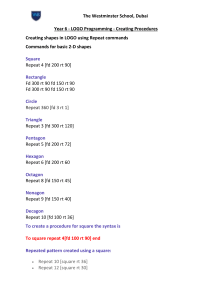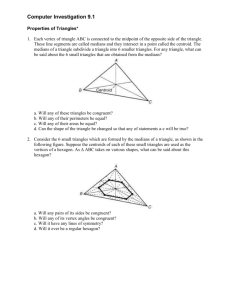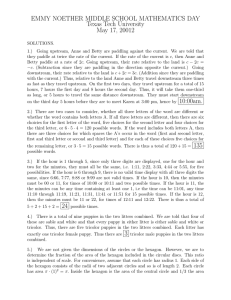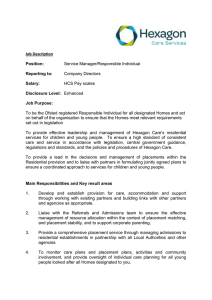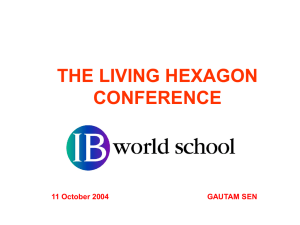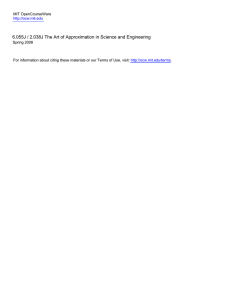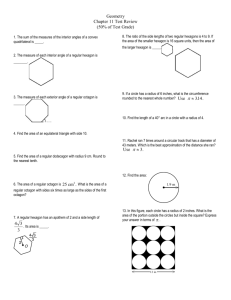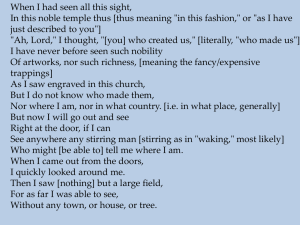1) Seven envelopes contain money. Three contain a $100 bill each
advertisement
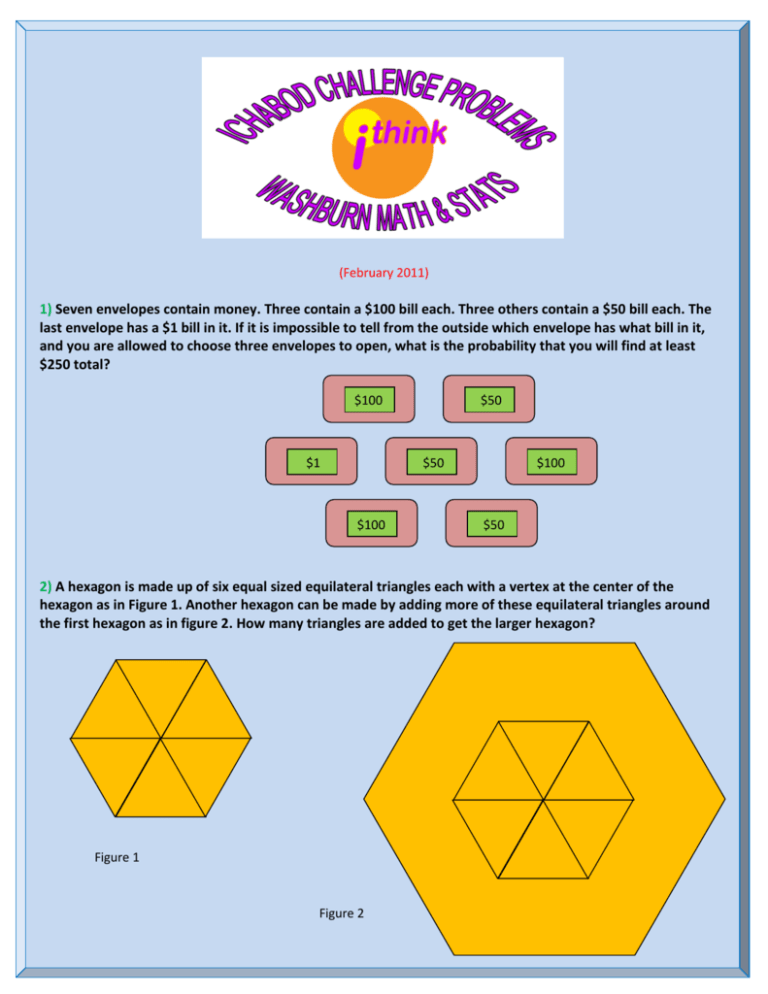
(February 2011) 1) Seven envelopes contain money. Three contain a $100 bill each. Three others contain a $50 bill each. The last envelope has a $1 bill in it. If it is impossible to tell from the outside which envelope has what bill in it, and you are allowed to choose three envelopes to open, what is the probability that you will find at least $250 total? $100 $1 $50 $50 $100 $100 $50 2) A hexagon is made up of six equal sized equilateral triangles each with a vertex at the center of the hexagon as in Figure 1. Another hexagon can be made by adding more of these equilateral triangles around the first hexagon as in figure 2. How many triangles are added to get the larger hexagon? Figure 1 Figure 2 3) To build a pyramid out of square blocks, I first make a layer of 20 blocks by 20 blocks that is one block high. Then I make a layer on top that is 19 blocks by 19 blocks. I keep adding layers until I get to a last layer that is a single block. How many total blocks did I use? 18 x 18 blocks 19 x 19 blocks 20 x 20 blocks 4) Can you fill in the given two by two table so that each cell has a distinct integer in it and the sums of the squares of each pair of adjacent cells is again the square of an integer? Notice there are four pairs of adjacent cells indicated by the arrows. 5) Given a regular (all sides and angles are equal) pentagon with side length one, what are the sizes of the three pieces in the picture? First Piece Second Piece Third Piece

